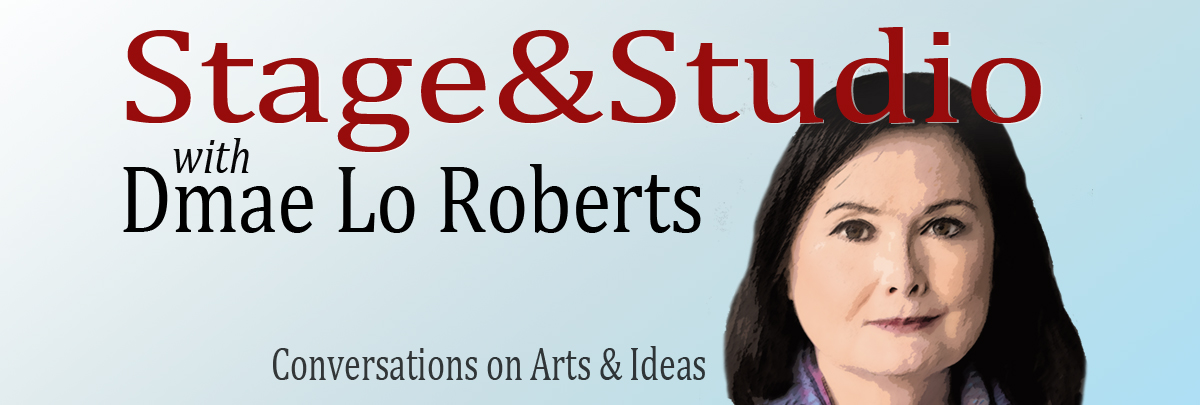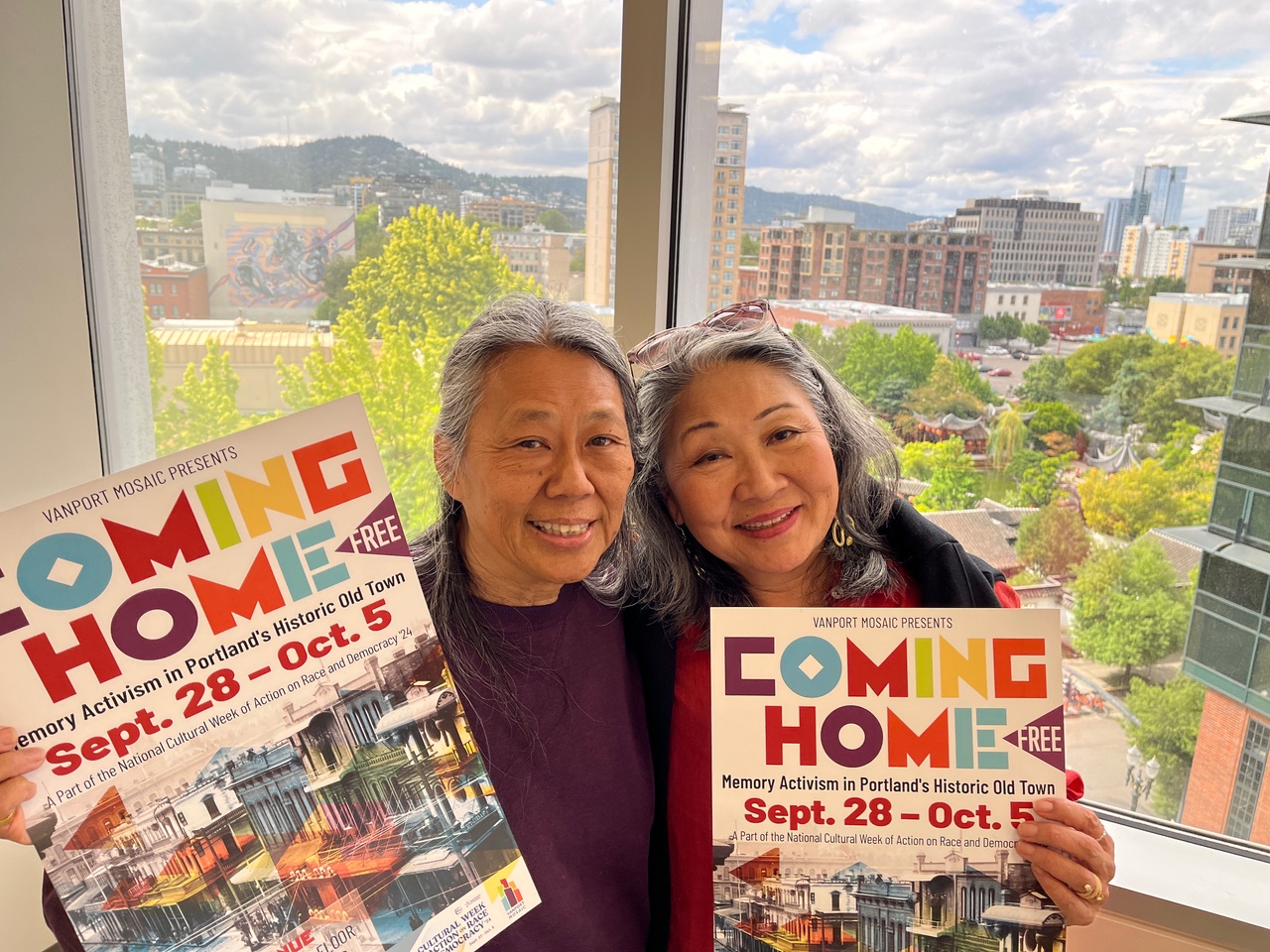Coming Home
Chisao Hata, veteran artist, activist and community weaver and Roberta Wong longtime visual artist and curator both have personal and family histories connected to Portland’s historic Old Town. They are about to embark on Vanport Mosaic’s Coming Home project events September 25th through October 5th. Their project was one of 14 selected nationwide by Race Forward and Americans for the Arts.
Dmae Lo Roberts talked with Hata and Wong about the Coming Home project and about the history and personal memories of Old Town. In this podcast you’ll hear…
Roberta Wong: “There were still strong businesses and um in the area through the 60s, 70s, and 80s, even through the 90s. It was probably post-2000 when the community really it became challenged with a lot of the ah ah development that was occurring. The light rail impacted businesses you know, being able to have um customers come to the area as well as, again, lots of buildings. And I think that was the the challenge that we see today, that we’re not the same Chinatown we were. There’s not the population that live there, thankfully, because they don’t have that restrictions.”
Chisao Hata: “Japanese pioneers came in the late 1800s. My grandmother was one of 40,000 picture brides because women were not allowed to come to America unless they were married. So she was one of those picture brides coming to Oregon and landing in Nihonmachi, or Japan town. And at the time on the West Coast, prior to World War II, there were 41 Nihonmachi’s along the west coast, Washington, Oregon, and California. The Portland’s Nihonmachi had over 300 businesses. Many of the people lived there because of the covenant laws that restricted where they could live. There was about a 10 block radius. that occupied what was then Nihonmachi. And Chinatown spread not only in that area but farther northwest, so around where the Multnomah Athletic Club.”
Chisao Hata is a performing artist, community organizer and global citizen artist, Chisao’s original chore-poems weave issues of identity and social justice. Her performances in Hiroshima, Japan, Cuba, New Mexico, Ontario, Oregon and Poston, Arizona are rooted in Japanese American history. GAMBATTE: An American Legacy, and The Portland Assembly Center Project express stories of dispossession, resilience and humanity. She is an Oregon Humanities Conversation Leader, Vanport Mosaic Community Weaver and a guest artist at the Dance Exchange in Takoma Park, Maryland
Roberta May Wong, was born to immigrant parents in Portland, Oregon (b.1953). She is a graduate of Portland State University, B.A. in Sculpture. Volunteering with nonprofit art and Asian organizations led to a twenty year career as an administrator and gallery director supporting visibility and economic opportunities for BIPOC artists. Currently, she is retired and serves as a volunteer and curator at the Portland Chinatown Museum. A conceptual and installation artist, her art explores racial, social, and cultural identity. She has exhibited in Oregon and Washington, and is published in The Forbidden Stitch: An Anthology of Asian American Women Artists, Calyx, 1989; Surviving Myths, Deakin University, 1990; and Where Are You From?: An Anthology of Asian American Writing, by Valerie Katagiri and Larry Yu, 2012.


